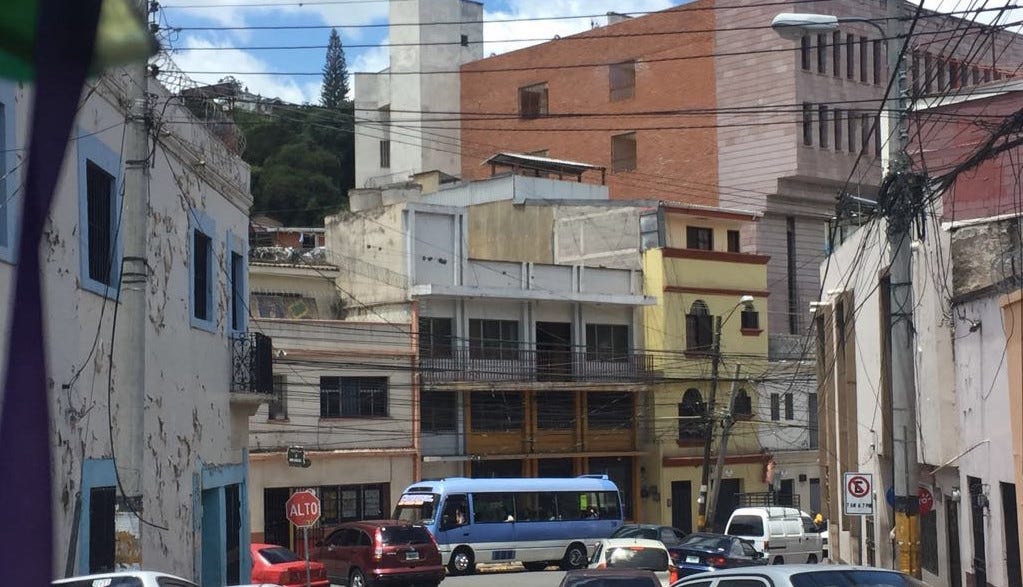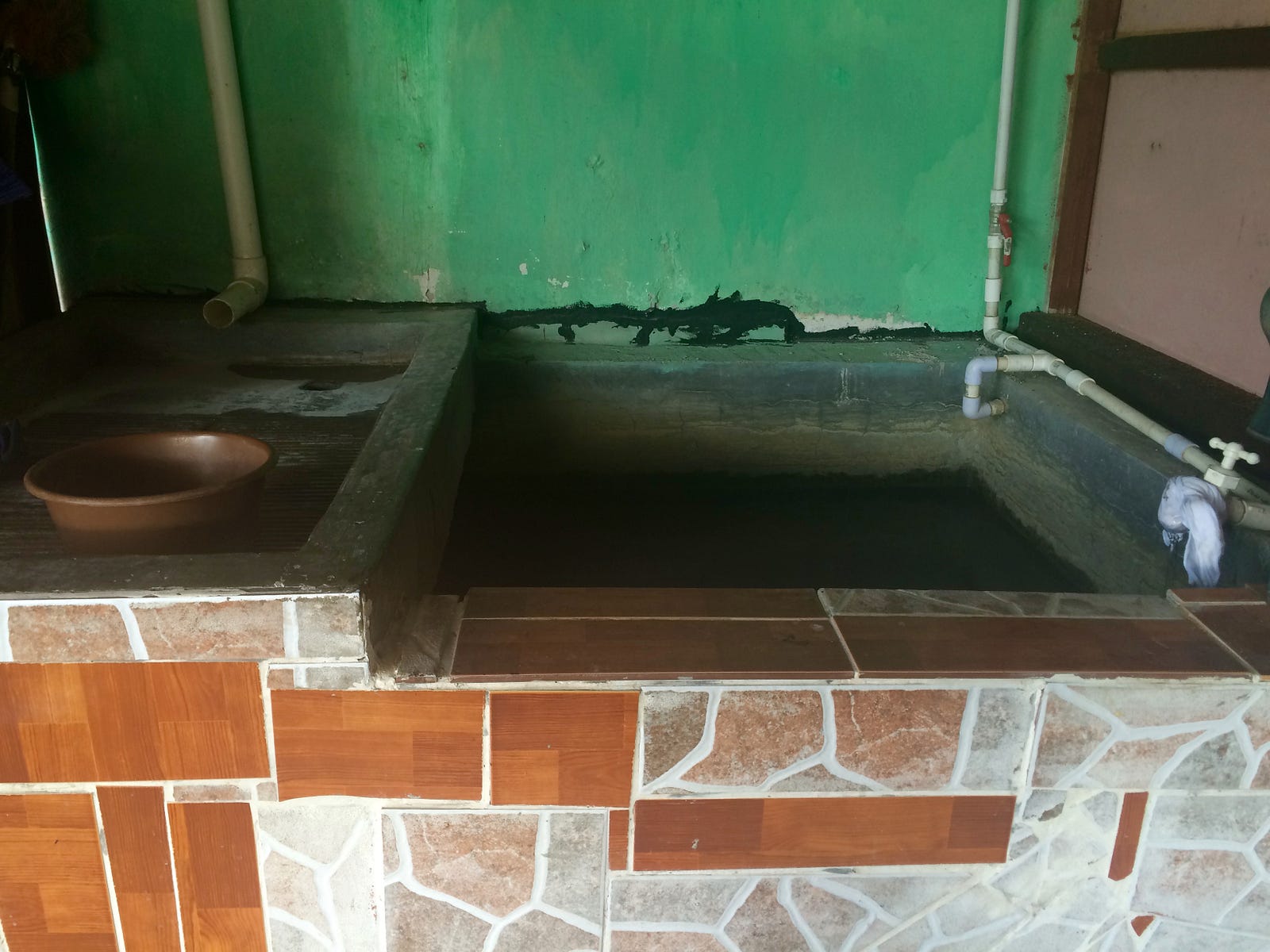


Based in her hometown of Tegucigalpa, Honduras, Jennifer set out to ask as many questions as possible to the organizations involved in drinking water access in Honduras. organizations. She found a complex system in which peri-urban and difficult to reach rural areas fell through the cracks, and even urban areas lacked consistent access.

I arrived in my hometown of Tegucigalpa, Honduras to start my Fellowship as an Archimedes Project Frontier Social Entrepreneur committed to doing my best work to contribute to sustainable solutions in the water sector in Honduras. I grew up in Honduras and the great majority of my family still live there are affected by issues related to water daily and in every way.
Inspired by the ethos of the Archimedes Project and the purpose of my fellowship, coming in I looked forward to asking as many questions as possible to a broad range of actors in the sector. I very much looked forward to listening and learning from past successes and failures to create a solid understanding and foundation for a clean water enterprise in the near future. During the past two months of exploring and investigating, I have learned a lot about water service organization, ensuing challenges and achievements. I share a few key lessons here.
Although I’d established a work plan for the summer before my arrival, the plan quickly changed as a result of exchanges with local actors and the realities of operating in-country. Having a flexible, dynamic work plan allowed me to incorporate information as I received it and therefore widen the scope of the investigation for the better.
Initially, I looked at the state of water provision in Honduras and found a wide-range of providers: the state-operated SANAA (Servicio Autónomo Nacional de Acueductos y Alcantarillados), individual municipalities, independent water boards and international development organizations.
Further, I delved into the operational context, legal framework and implications of the Ley Marco del Sector Agua y Saneamiento — the most important piece of legislation to regulate the water and sanitation sectors.
Subsequently, I looked at the different modalities/management models employed to comply with the legal framework, their achievements, challenges, and gaps.

The availability of clean water is crucial for every aspect of development, from the most basic need of having drinking water, to food cleaning and preparation, personal and home hygiene, and growing crops for food. Honduras has always faced issues with water by all indicators: availability, continuity and quality. The Servicio Autónomo Nacional de Acueductos y Alcantarillados (SANAA) was established in 1961 and was meant to be the government’s national organization to deal with water and sanitation. However, it never did reach national scale and stayed mainly in districts in or around the Distrito Central (Tegucigalpa / Comayaguela). Given the SANAA’s inability to provide services to people everywhere, citizens began to look for alternatives to try and meet their basic water needs, in an unregulated manner. These ways of meeting their needs ranged from establishing local water boards, working with foreign NGOs to provide water to specific populations, inception of private delivery companies and the municipal takeover of government responsibilities.
In 2003, in order to provide water access to as many people as possible as quickly as possible, the government passed the Ley Marco del Sector Agua y Saneamiento to transfer control of water infrastructure from the centralized SANAA to the 298 municipalities. Further, the law created organizations that are supposed to be mutually-reinforcing: SANAA is supposed to take a technical advisory role Consejo Nacional de Agua y Saneamiento (CONASA) is meant to decide sectoral policy and the Ente Regulador de los Servicios de Agua Potable y Saneamiento (ERSAPS) is supposed to be the regulating entity for all water service providers. The success of the Plan Nacional de Agua Potable y Saneamiento (PLANASA), ratified in November 2014, is predicated upon these entities assuming their assigned roles; however, very little has changed and SANAA, for example, still provides service to most of Tegucigalpa with no established plans or timeline for a handover.
NGO, government and municipal actors largely define community engagement with water services in two statements: 1) people will not pay for bad service; 2) people do not demand good service. Irregularity in the quality of service has bred distrust and a self reinforcing cycle where people are unwilling to pay for bad service and service cannot be improved for lack of money for maintenance and sustainability.
NGO partners cite aggressive engagement with the community as one of the universal best practices. Within a culture where poor water services and distrust of water entities are the norm, convincing citizens otherwise is critical to success and sustainability of any project.
Peri-urban households in Tegucigalpa largely do not hold the deeds to the land they occupy and are not able to request that SANAA provide them with access to the water network. Rural-disperse households (areas with fewer than 250 inhabitants) are largely located in high-altitude regions which makes water provision more difficult and more costly. High altitude regions are difficult to reach with existing infrastructure; the landscape necessitates the use of electrical pumps which great increase the cost for provider and consumer.
According to official figures, Honduras met the Millennium Development Goals (MDG) and national water coverage has reached 90 percent (97 percent in urban areas and 82 percent in rural areas). These figures are based on a question in the census that asks whether or not has a faucet available. This question does not account for water quality, quantity or continuity. This figure is not representative of the need on the ground and has instead been used to move focus and support from the water and sanitation sectors which are very much still a need.
In the event that a household cannot afford to purchase drinking water, the household resorts to negative coping strategies such as consumption of untreated water and reliance on less preferred foods and drinks (processed food, soda, fruit juice) to compensate. A liter of bottled drinking water costs USD 1 which is twice the cost of Coca Cola.
There is no national information management system that can provide accurate information for prioritization and targeting. There are an estimated 7,000 to 10,000 independent water boards in Honduras whose functions range from community engagement to water and sanitation service provision. There is no exhaustive information about all of the actors in the sector and their roles; accordingly, it’s impossible to prioritize needs, prioritize assistance and/or create an effective framework to regulate them.
Honduras has one of the highest levels of deforestation in Latin America — 37 percent — which affects current water supplies; the situation is made worse by longer, hotter summers as a result of el Nino. Uncontrolled and unregulated urban expansion has begun to penetrate critical watershed areas such as the Guacerique watershed — one of the only three future of water sources for Tegucigalpa. In the northern part of the city, urban and peri-urban growth is encroaching on the United Nations Parks (El Picacho) and La Tigra National Park which threatens the quality of life of another important watershed.
The first two months in-country, research and interviews with stakeholders in every sector allowed me to create a landscape view of the players, the legal and operational framework that they operate in and the ensuing challenges. Further, the first phase of this project has elucidated three main limitations: 1) distrust between communities and providers; 2) no existing national or even regional information management system that can be consulted to determine priorities, needs, assistance, etc.; 3) the government is reactive rather than proactive. During the next phase, I want to focus on solutions. Given the geographic, cultural and economic diversity in Honduras, ways of providing water might be completely different from one community, municipality or department to another, but the hope is still the same: potable water in every household.
From: Meeting the Water Millennium Development Goal and Missing the Point in Honduras